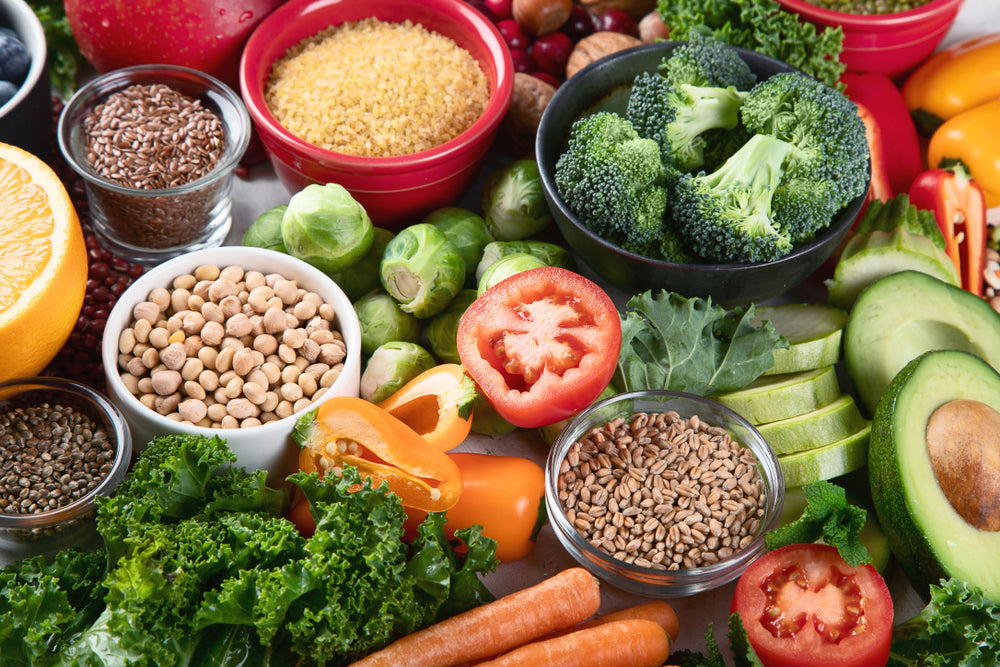
Why Fibre Matters for Your Gut
Fibre keeps things moving so you feel regular and comfortable.
Your gut microbes feed on fibre and produce helpful by‑products. This can calm irritation in the bowel and support a steadier mood and energy.
Fibre helps you feel satisfied after meals. Over time it also supports heart and blood sugar health.
How Much Fibre Do You Need?
Most adults do well aiming for about 30 g each day. Many people fall short, so build up slowly to avoid extra gas and cramping.
Children need less based on age. A simple guide is 15 g for younger kids, 20 g for mid‑teens and 25 g for older teens unless your GP advises otherwise.
Drink water across the day so fibre can do its job. Think about a glass with each meal and snack.
Soluble and Insoluble Types of Fibre
Different fibres act in different ways, so a mix from plants is best.
Soluble fibre mixes with water and forms a soft gel that many sensitive guts find easier. Insoluble fibre adds bulk and helps things move.
You get both types by eating a wide range of plants.
Helpful examples include beta glucan from oats and barley. Inulin‑type fibres in onions, leeks, bananas and pulses feed friendly bacteria, while cereal fibres in wheat add bulk.
List of Best High‑Fibre Foods
A food is a source of fibre at 3 g per 100 g and high in fibre at more than 6 g per 100 g. We will only list foods here that are usually above 6 g of fibre per 100 g.
Fruits
- Dried figs and apricots
- Fresh raspberries, blackberries
Legumes
- Lentils
- Split peas, chickpeas
- Black beans, kidney beans, pinto beans
Wholegrains
- Oats and high‑fibre breakfast cereals
- Rye bread and wholemeal breads (labelled ≥6 g/100 g)
Nuts and Seeds
- Almonds, pistachios, walnuts and hazelnuts
- Flaxseeds, chia seeds, pumpkin, sunflower and sesame seeds
Note that you have good sources of fibre like vegetables that are below 6 g per 100 g but are still a great way to get fibre.
How to Add More Fibre to Your Meals
Breakfast
- Porridge made with rolled oats topped with fresh berries and a spoon of chia seeds alongside Cosmic Hue.
- A bowl of high‑fibre cereal with a sprinkle of flaxseeds.
Lunch
- Lentil soup with a side of rye bread.
- Chickpea salad with a portion of wholewheat pasta.
- Bean chilli served with quinoa.
Dinner
- Chickpea and vegetable curry with brown rice.
- Red lentil dal with a side of high‑fibre wholegrain bread (≥6 g/100 g).
- Mixed bean stew with extra vegetables.
Snacks
- Unsalted nuts (almonds, pistachios, walnuts).
- Roasted chickpeas.
- Dried figs or dried apricots.
Considerations if You Have Gut Issues
If your gut is sensitive, increase fibre slowly. Add two or three grams every few days and notice how your body responds.
Favour gentler, soluble fibres when you feel reactive. Oats, chia, ground flax and peeled ripe bananas are often easier than rough salad leaves.
If you bloat often, cook more of your vegetables. Cooking softens fibres and lowers the fermentable load, which can feel easier on a sensitive gut.
Keep a brief two‑week food and symptom note to spot patterns without over‑restricting. If symptoms change suddenly or feel severe, seek medical care.
Conclusion
Fibre is a daily habit, not a single food. Add more plants to the meals you already enjoy and build up at your own pace.
Keep it calm and consistent. Try a daily cup of Cosmic Hue to help set your gut daily in the morning.

